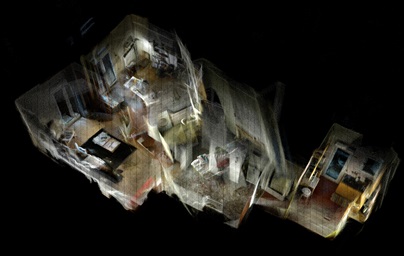Smart digital contents and neural interfaces, the focus of three new research projects funded by Europe
Smart digital contents and neural interfaces, the focus of three new research projects funded by Europe
Josep Blat, Marcelo Betalmío, Antoni Ivorra and Leo Wanner are the researchers with the University’s Department of Information and Communication Technologies participating in three projects selected in the framework of the European Commission’s Horizon 2020 programme.

Lecturers with the Department of Information and Communication Technologies (DTIC) are among the principal researchers of three research projects funded by the European Union in the framework of the H2020-ICT-2016-2017 announcement of the Horizon 2020 programme.
These projects, which will take place in collaboration with various international institutions, are framed in the thematic areas of digital tools for the creative industries and of interfaces for accessibility. They are notable for their innovative contribution and their knowledge transfer to society, in order to benefit both organizations and individuals.
Two of the projects come within the section of the call entitled “Tools for smart digital content in the creative industries”. In the first place, “Smart Asset re-Use in Creative Environments” (SAUCE), a project coordinated by Josep Blat, director of Interactive Technologies research group (GTI), together with Marcelo Bertalmío, coordinator of the Image Processing for Enhanced Cinematography research group (IP4EC), who will be leading a group formed by nine European institutions and universities.
Secondly, “Visual and textual content re-purposing FOR(4) architecture, Design and virtual reality video games” (V4Design), whose principal investigator is Leo Wanner, ICREA-UPF research professor and director of the Natural Language Processing research group (TALN). This project will be conducted by eleven European institutions, coordinated by the Centre for Research and Technology of Hellas (Greece). It will be funded with a total of nearly three million euros, 475,000 of which correspond to Pompeu Fabra University.
Finally, the third project, which was presented within the “Interfaces for Accessibility” field of the European announcement, is entitled “Bidirectional Hyper-Connected Neural System” (EXTEND), with the participation of Antoni Ivorra, Hunter Serra professor and director of the Biomedical Electronics research group (BERG). Six institutions are taking part, coordinated by the CISC’s Instituto Cajal, and it is endowed with some 3 million euros, of which UPF will receive nearly 360,000 euros. EXTEND will depend to a large extent on the technology developed in the framework of the ElectronicAXONs project, coordinated by Antoni Ivorra himself, which last year received a Consolidator Grant from the European Research Council (ERC).
The European Commission’s H2020-ICT-2017 announcement, for which there were a total of 995 proposals, was highly competitive with a success ratio of less than 5 per cent. With regard to the field “Tools for smart digital content in the creative industries”, to which two of the projects of the DTIC belong, 115 projects were submitted of which only five will receive funding. In respect of the “Interfaces for accessibility” category, there were 84 submissions of which only two or three are expected to receive funding, i.e., a success ratio of around 3%.
The three projects to be carried out at the DTIC
SAUCE will investigate, develop, pilot and demonstrate a set of professional tools and techniques aimed at the creative industries in order to make their contents ‘smarter’, so that they are completely adaptable, broadly and unprecedentedly: adaptable to the context (to facilitate its reuse), to the target (between or within the industries), to the user (to improve the viewing experience) and to the production environment (to make them future-proof).
The approach is based on research in the area of light field technology; on automatic classification and labelling, using deep learning and semantic labelling to describe and draw inferences; and on the development of tools for the automated processing of assets, smart animation, storage and recovery. These new technologies and tools prove that it is possible to greatly reduce costs and increase efficiency. They will also facilitate the production of more, higher quality and more creative content, to the benefit of the competitiveness of the creative industries in Europe.
The aim of V4Design is to develop a platform that provides architects, creators of video games and designers with any experience with the innovative tools required to improve and simplify the creative stage of the design process. It seeks to reuse visual content (films, documentaries, images) and text (textual documents in films, reviews, catalogues, museum guidebooks) and make them useful for these groups.
The project will develop data collection and recovery techniques that will collate data from content providers and trawl art libraries online, in order to extract 3D and VR representations of objects, buildings and cityscapes. In addition, the project will introduce innovative design techniques based on the visual and textual technologies of ICT. These techniques will enable identifying, for example, the artistic style or aesthetics of a specific historical time and locate buildings and art objects from visual data. All of this enhanced with semantic knowledge, smart indexing and recovery capacity.
EXTEND aims to develop the new concept of Bidirectional Hyper-Connected Neural Systems (BHNS) to extend the capabilities of neural interfaces with minimally invasive communication links between multiple nerves of the body and various external devices. EXTEND will develop a continuous neuromuscular interface technology (injectable) that allows distributed stimulation, detection, processing and analysis of neuromuscular activity, the last stage of the neural code of movement.
The project will show the advantages of this new technology in two applications: one, managing shaking regarding basic tremor and Parkinson’s disease, and the other, assistive robots that are used for spinal cord injury. EXTEND will also work on creating a community centre that unites stakeholders to achieve an ecosystem of innovation that can fuel the rapid development of neural interfaces in this field.
